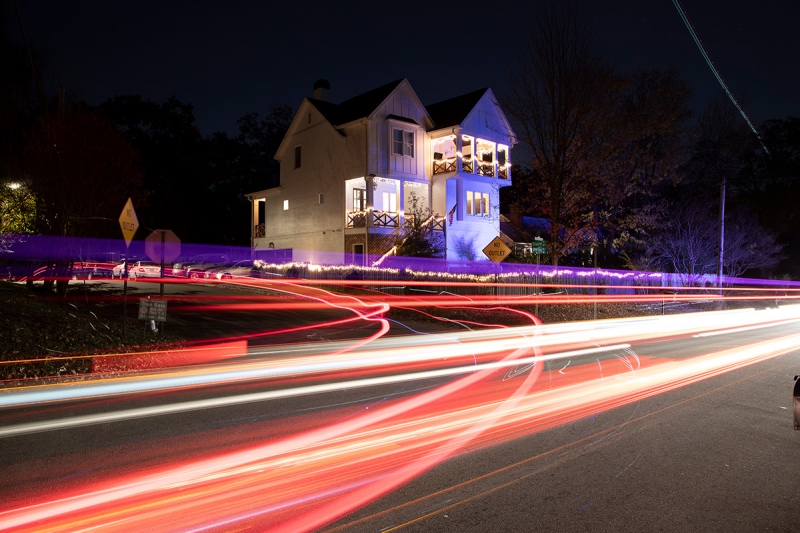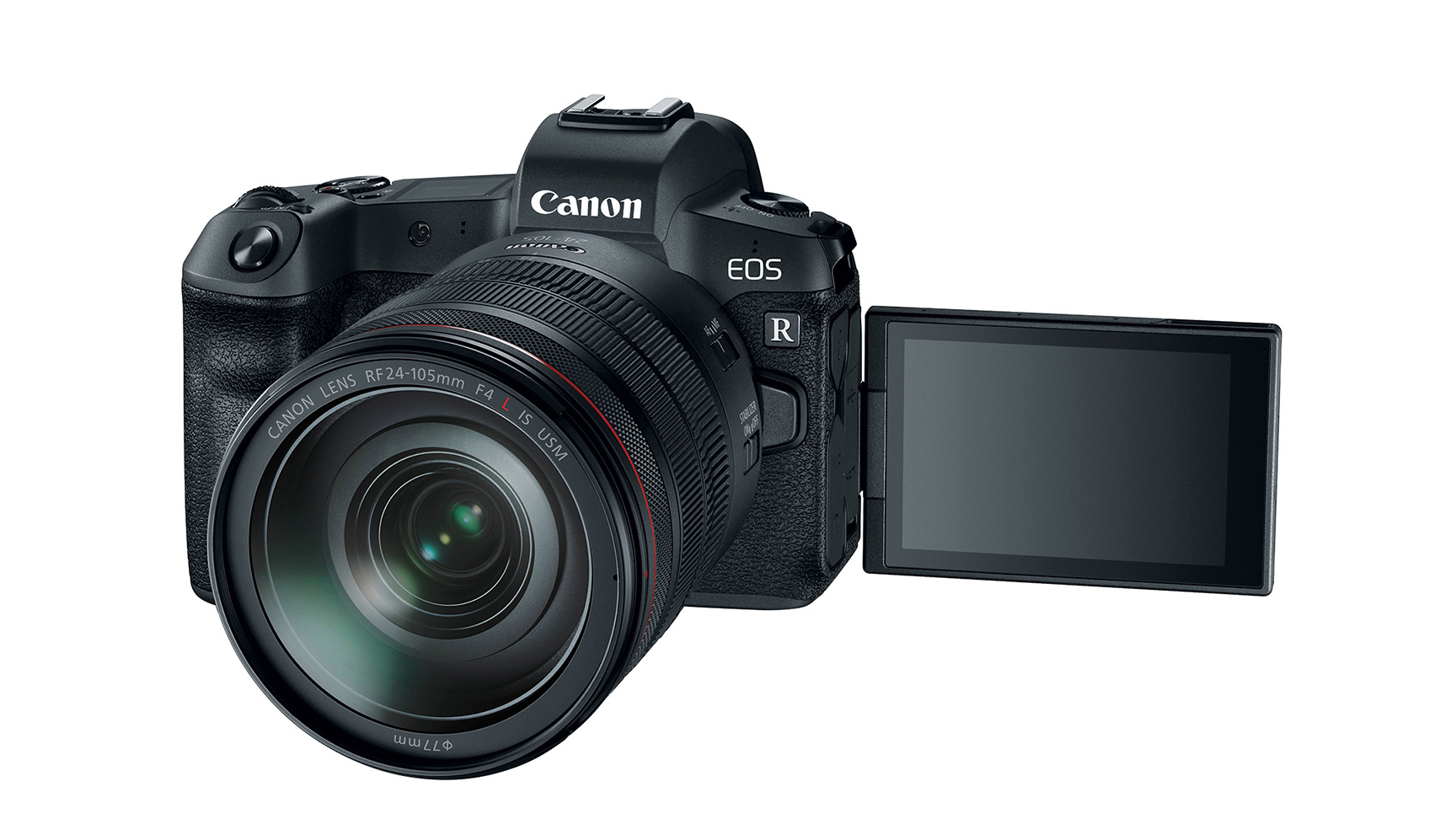Review: Canon EOS R mirrorless camera
A product review of the Canon EOS R mirrorless camera
• February 2019 issue
Change is not always a gradual evolution. Sometimes it’s more like an earthquake. For photographers, the seismic shift to full-frame mirrorless digital camera systems began in 2013. That was after Sony acquired Minolta’s photography division and built the first-generation Alpha 7 around the Exmor CMOS sensor. Now Canon, with its EOS R system, and Nikon, with its Z system, have stepped in. These cameras mark a turning point for professional photographers. Not only are they smaller and lighter, but they open the door for better optics and autofocus systems.
Rather than adhering to the requirements of single-lens reflex camera types, these new, more compact cameras are built around larger diameter lens mounts with shorter flange-to-sensor plane distances. This opens new possibilities for lens designers to engineer better performing lenses. To bridge the gap while the new lines of optics fill out, Canon and Nikon offer adapters that allow their SLR-designed lenses to be used with the mirrorless cameras.
The first practical SLR cameras date back to the 1930s, and while there have been technical improvements in the eight decades since then, the need to design around the space and mechanisms of the reflex mirror and viewing systems has been a constant.
Fujifilm introduced live view—the ability to see a version of what the sensor sees on a camera’s LCD panel—in the FinePix S3 Pro in late 2004. That opened the door for two more developments: digital video from cameras designed primarily for still photography and the move away from optical viewfinders.
Doing away with the mirror meant that lens designs, especially for normal and short focal length lenses, could take advantage of having a rear element that was much closer to the sensor. Designers incorporated larger-diameter rear elements to ensure better aberration and distortion reduction. The SLR camera body design still has some advantages, but time and technology are catching up with it.Fujifilm introduced live view—the ability to see a version of what the sensor sees on a camera’s LCD panel—in the FinePix S3 Pro in late 2004. That opened the door for two more developments: digital video from cameras designed primarily for still photography and the move away from optical viewfinders.The first practical SLR cameras date back to the 1930s, and while there have been technical improvements in the eight decades since then, the need to design around the space and mechanisms of the reflex mirror and viewing systems has been a constant.Rather than adhering to the requirements of single-lens reflex camera types, these new, more compact cameras are built around larger diameter lens mounts with shorter flange-to-sensor plane distances. This opens new possibilities for lens designers to engineer better performing lenses. To bridge the gap while the new lines of optics fill out, Canon and Nikon offer adapters that allow their SLR-designed lenses to be used with the mirrorless cameras.

You can get a feel for the extremely shallow depth of field possible in this dreamy image photographed using the RF 50mm F1.2 L lens on the Canon EOS R.
Canon’s entry into the full-frame mirrorless fray is the EOS R. It’s an outstanding camera, but there’s room for improvement. If you’re already a Canon user, you’ll find its operation is significantly different from other cameras in the EOS lineup because the controls have been radically redesigned. Those physical changes, along with the brighter electronic viewfinder (EVF), more consistent and accurate autofocus, and the ability to place a focus point almost anywhere in the composition, make for a new shooting experience.
Image quality is excellent, as is signal-to-noise ratio up to ISO 10,000. It would be great if the dynamic range was a stop larger, but for 99 percent of the photography I do, this isn’t a limitation. Two big things are missing: a second media slot (a small-body design sacrifice) and an in-body image stabilization (IBIS) system. A second media slot programmed to make in-camera backups is cheap insurance against media failure, and an IBIS would greatly extend the camera’s ability to make sharper images in low light.

The EOS R Control Ring Adapter lets you keep using your EF lenses. This image was taken with a Canon EF 135mm f/2L lens handheld for an exposure for 1/200 second at f/2, ISO 2000.
The 5,655 sensor points in the Dual Pixel CMOS-based autofocus system allow you to pick a focus point accurately and reliably. There are seven autofocus methods: face recognition with tracking; single point; two expanded area methods (one chooses the points immediately left, right, above, and below the chosen point and the other chooses those surrounding that point); and three zone methods (standard, large-zone vertical, and large-zone horizontal). All modes of focusing work accurately and swiftly using the new Canon RF 50mm F1.2 L USM lens wide open.
Once I learned how to use the touch-sensitive 3.15-inch (diagonal) 2.1 million-dot LCD monitor to move the focus point with my thumb while using the EVF as I framed and shot, it became a natural way of working. The big LED, which swings out from the body and can pivot in a 270-degree arc, serves as the command center for the camera and is useful for quickly setting up the camera for different situations. If you have small hands and cannot reach the far left corners and edge of the screen, you can restrict the touch-and-drag AF to the right, left, top, or bottom halves of the screen, or go even further and restrict it to one of the screen’s four quarters. The placement of the other controls feels right, with the exception of the AF on button, which I find too small and too far to the right to use quickly.
Along with the EOS R body, Canon loaned me the new RF 24-105mm F4 L IS USM and the RF 50mm F1.2 L USM lenses for this review. If you are an event or wedding photographer, or simply love shallow depth of field, the extremely high-quality and correction of the RF 50mm F1.2 L lens alone may be reason to buy this camera. Likewise, the RF 24-105mm F4 L is sharper and better corrected than any of the EF versions of this popular and versatile zoom.
Canon also sent an EF to EOS R Control Ring Adapter, one of three EF-to-R mount adapters available. I had no issues using the adapter with a variety of Canon and Sigma Art series lenses. Adding the programmable control ring to EF mount lenses is a nice touch, but where RF lenses have the ring toward the front, the adapter puts it right up against the body, making it awkward to use because the entire weight of the lens is well forward of the body.
The mode controller is still on the top deck but on the right side of the viewfinder instead of the left, and the programmable multi-function bar is just below it. You can choose one of 10 exposure modes for still photography and eight movie shooting modes by rotating the knurled collar around the mode button or by using the touch sensitive screen. New Scene Intelligent Auto and Fv modes are available for still and motion capture. Fv is not really a shooting mode but a faster way to choose between Aperture-, ISO-, and Shutter-priority modes, and Manual, and Program modes.

This long exposure was taken using the RF 24-105mm F4 L lens on the Canon EOS R for 25 seconds at f/8, ISO 100.
You can reprogram virtually all of the control buttons, dials, the multi-function bar, and the control ring on RF lenses or an EF to EOS R control ring adapter. This lets you set up the camera in exactly the way that works best for you. I found this customization more useful on the EOS R than on my Canon DSLRs.
After three weeks of using the EOS R, what really impresses me are three things: the bright EVF and the autofocus system, which make it easy to see what the camera is focusing on even in very low light; the accuracy and speed of the autofocus system; and the overall shooting experience. This is Canon’s first full-frame mirrorless digital camera, and while it has a couple shortcomings, it has a great deal to offer at a reasonable price. The body sells for $2,300, the RF 24-105mm F4 L is $1,099, and the RF 50mm F1.2 L is $2,299.
Ellis Vener is contributing editor of Professional Photographer.
Tags: cameras canon mirrorless cameras


 View Gallery
View Gallery